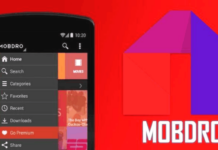If you've ever wondered how to close apps on iPhone 13, there are a couple of different ways to do so. You can clear your cache, force close apps, and kill suspended apps. All of these methods can be done with the right tools. The process is relatively easy, but it may not be the quickest or most convenient way.
Force closing apps
If you have an iPhone 13 and find that apps are not closing, try force closing them. You need to swipe up from the bottom of the screen to close them. When you do this, you'll see the apps disappear from the top of the screen. The iPhone will allow you to force close up to three apps at a time. This can be a great way to fix problems and save battery life.
The process is not unlike that of Android, but iOS handles apps in a different way. This makes managing apps on the iPhone easier. Force closing apps is available for all Face ID equipped iPhone models, including the new iPhone 13, the older iPhone 12 and the iPhone 11 from last year. The process is slightly different on the iPhone SE and the older Touch ID versions of the iPhone line.
To force close an app on the iPhone 13, you first need to reach the app switching screen. This screen appears when you swipe up from the bottom edge of the screen. In this screen, you'll see a thumbnail gallery of the currently open apps, along with any suspended ones. Once you find the app you want to force close, you can swipe up on its thumbnail. Then, you can either close or open it again.
Force closing apps on iPhone 13 is an important option when you want to maximize battery life. Manually closing apps may drain the battery faster than you'd like, and they require more CPU cycles. Hence, you should only force close apps if you are sure that they're not responding or are using too much resource.
Clearing cache
The first step to speeding up your iPhone 13 is to clear the cache. This simple process will free up a lot of space and speed up your iPhone. You've probably wondered how to do this, since the software on Apple's smartphones is supposedly a lot easier to use than Android's. Fortunately, it's not rocket science and is easy enough for anyone to perform.
To do this, simply drag your finger up from the bottom edge of your screen. Make sure that your finger covers at least 25 to 30% of the screen. You'll then see the app switcher. From there, swipe to the right until you find the app you'd like to remove.
If the app doesn't have a "clear cache" button, you can try deleting it and reinstalling it. To check if your app's cache is still being stored on your device, you can go to the Settings menu and go to General > Storage. In this section, look for the app's cache files. If they're still there, restart your iPhone to clear the cache.
Once you've cleaned up the cache, you should be able to launch apps faster. This will free up space on your phone. This will speed up your iPhone by freeing up memory. If you're experiencing any issues when trying to load websites, clearing the cache will solve those issues. But be sure to only use Apple-compatible cleaning apps. You don't want to endanger your device by using third-party cleaning apps.
If you find your iPhone slowing down frequently, you may want to try clearing cache more frequently. It will free up storage space and speed up your browsing. You might also be able to fix battery issues by clearing the cache on your iPhone.
Killing apps
You can kill apps running on your iPhone 13 by swiping up from the bottom of the screen. This will open up a new menu where you can choose which apps to close. From there, you can swipe up or left to close the app. This will then end the running application.
You can also try closing apps if they have become unresponsive or have taken up too much memory. This is not recommended for apps that you use frequently. However, you may find it necessary to do this if the apps have become unresponsive or have started acting weird. Additionally, closing apps can free up RAM for other functions, like uploading media.
Another way to fix a frozen app is to force it to close from the App Switcher or Recent Apps. This is called force-close and will stop it from running in the background. This is especially useful when your iPhone becomes unresponsive or freezes. Swipe up from the bottom edge of your screen and pause in the center of the screen. The multitasking view will show you all the apps that you recently opened.
To close multiple apps, you can swipe up multiple times on each window of an app. It will take a few seconds to close each window. Restarting the phone will not force-close apps - it will simply restart them. However, it's possible to close three apps simultaneously. However, swiping up each window individually may take some practice.
Force closing suspended apps
If you have a lot of apps that aren't responding and are causing your iPhone to slow down, you might want to force-close them. By doing this, you can stop the app from running in the background and kill it. You'll find that this is especially helpful when your iPhone freezes.
Force-closing apps is one of the easiest ways to fix an app that has stopped responding. Apple's iOS system will try to handle this automatically. This way, you'll never have to force quit an app manually. In fact, forcing quit an app isn't necessary if it's still responding.
For this, you need to swipe up from the bottom of your screen. Then, swipe to the right or left until you find the app that's open. Once you've found the app, swipe its window up to the top of the screen. When you're ready to reopen the app, you can swipe it back down.
Force-closing apps won't improve your battery life, but it's helpful if you need to restart an app. To do this, you need to be in the App Switcher. To access the App Switcher, double-click the Home button and swipe up. You'll then see a gallery of apps that are currently in use. You can also swipe up and down to select a specific app and force-close it.
If you're worried about battery life, you shouldn't force-close suspended apps on your iPhone 13 unless you're using them. Force-closing apps will only waste your battery and will not improve the performance of your device. When using your phone for longer periods of time, it's a better idea to use low power mode or disable background app refresh.
Clearing data from apps
There are times when you may need to clear data from apps on your iPhone 13 to prevent them from using your internal storage. Most apps have the option to clear their cache and data from the Settings menu. This process will remove any saved states and preferences, making the apps function like they did when you first downloaded them.
However, you should be aware that you may lose data stored within the app by clearing its data. It is not always possible to undo this process. Therefore, it is advisable to first try clearing the cache and data to avoid losing any information. Nonetheless, clearing data is a great idea if you've found that your app is running slowly or is crashing.
To clear data from apps, you'll need to go into Settings and tap the app you'd like to remove. If you can't delete the app's data, you'll need to re-download it from the App Store. This way, your data will be safe, and you'll have more space on your iPhone for the things that matter.
Clearing data from apps on iPhone 13 can also speed up the device by freeing up more memory. Although the next-generation mobile chip of Apple's smartphones boasts impressive speed, it can still get bogged down by unnecessary files. By clearing up your iPhone's cache data, you can improve its performance without buying a new phone.
Another way to clear data from apps on your iPhone is to delete them. This will free up storage space and allow apps to function at their optimal level.





